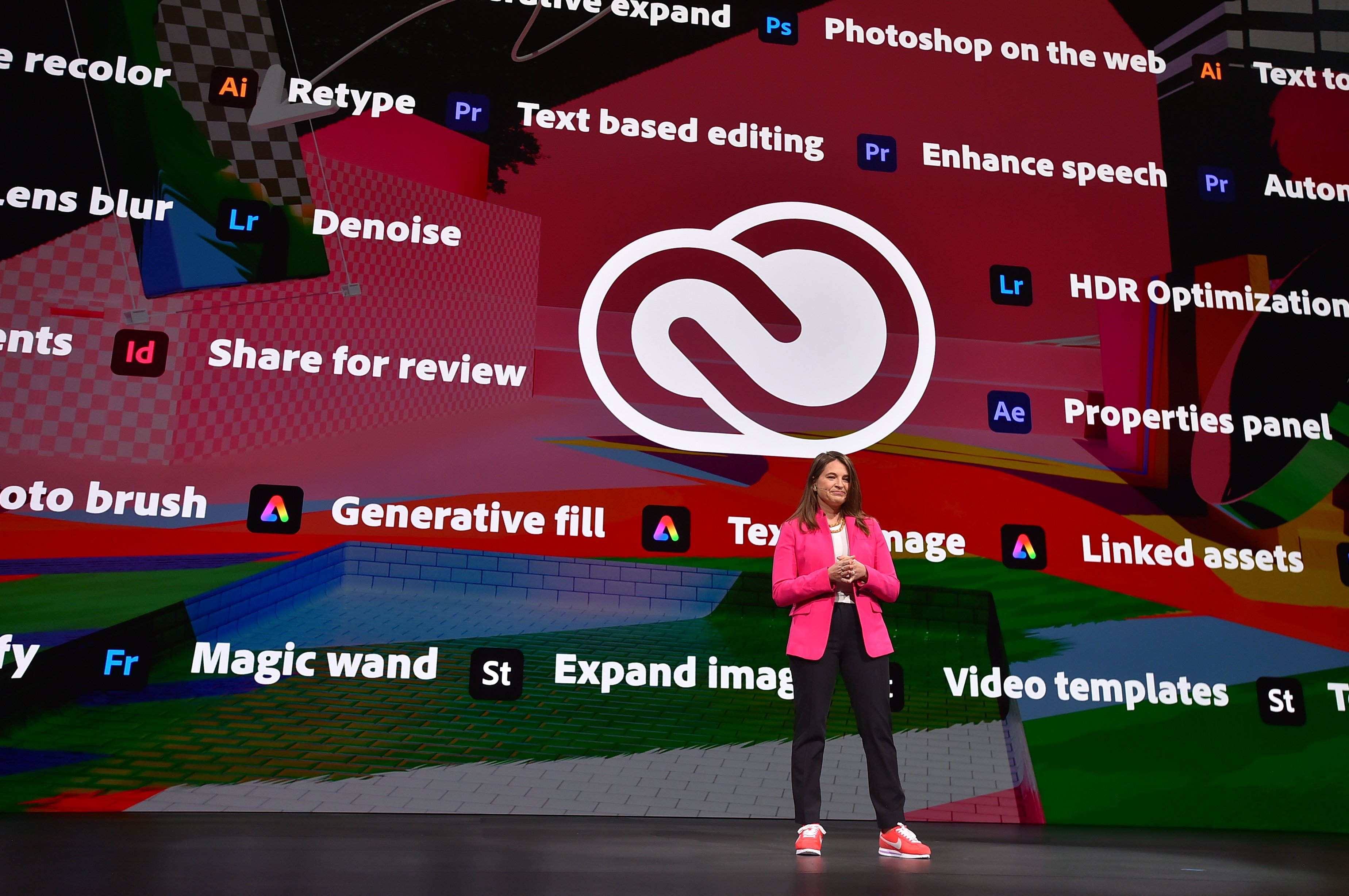Software giant Adobe (ADBE 1.48%) had been in the midst of a pretty significant transition for almost a year. The company has endeavored to move away from its traditional boxed software business that is sold in retail stores to a subscription-based model where customers can download the software from Adobe's online store or the cloud.
Recently, the company announced that the transition is over. Effective May 1, Adobe will stop selling the shrink-wrapped/CD-based version of its popular Creative Suite software and move exclusively to online distribution. This is not a surprise, however. Aside from the fact that rivals such as Apple and Microsoft have conducted similar changeovers, Adobe's "test run," which has produced half a million paid subscribers, has performed much better than expected. Adobe was ready, and it showed in the company's first-quarter report.
Great start to the fiscal year
Last week, not only did the company report stronger-than-expected first-quarter results, but management rewarded patient investors by raising full-year adjusted earnings guidance to $1.45 per share from $1.40 – topping Street estimates of $1.41. This is while also reiterating its full-year revenue forecast of $4.1 billion.
First-quarter revenue fell 4% year-over-year to $1 billion. The decline was due to the business model transition. Regardless, revenue still managed to beat Street estimates for the second consecutive quarter. This time, analysts were expecting revenue to arrive at $985 million. Adobe said the beat was helped by higher subscriptions, which more than doubled last year's revenue, arriving at $224.3 million.
The bottom line was also strong, despite the drop in profits, which fell to $65.1 million, or $0.13 per share. However, when excluding items and other charges, Adobe actually earned $0.35 per share, beating analysts' estimates by $0.04. This quarter's earnings were driven by higher conversion rate of customers that moved over to the subscription platform. Amid all of the good news, there were also some uncertainties.
Too good for its own good?
These were certainly impressive results, especially considering how corporate changeovers are never easy. It's also encouraging that management decided to raise guidance, which suggests that the company has worked out all of the kinks in this model and sees no meaningful signs of slowing down. But has Adobe gotten too aggressive?
For instance, following the company's fourth-quarter results, CEO Shantanu Narayen said, “We beat our Creative Cloud subscription goals and established Adobe Marketing Cloud as the leader in the exploding category of Digital Marketing during fiscal 2012. In fiscal 2013 we intend to accelerate our pace of innovation, and drive integration between Creative Cloud and Adobe Marketing Cloud.”
That statement was then followed by one from Mark Garrett, Adobe's executive vice president and chief financial officer, who said that 2013 would prove to be a "stronger and more predictable" year for the company in terms of recurring revenue with higher long-term growth. So far, both execs have been right. Adobe has, in fact, accelerated the pace of innovation and as Garrett predicted, Q1 results arrived stronger. However, there are some concerns.
The company added roughly 153,000 net paid subscriptions for its Creative Cloud service. However, guidance was pretty aggressive. Management said it expects to reach 1.25 million paid subscribers by the end of this year. That's a strong target, considering that the company ended Q1 with a total of 479,000.
This means that Adobe has 775,000 more subscribers to add in the next three quarters, which amounts to roughly 260,000 per quarter. Considering that the company added only 153,000 in Q1, Adobe has to average 70% more subscribers per quarter to reach 1.25 million for the year. What's more, the company will now have to accomplish this without Kevin Lynch, its former chief technology officer, who announced he would leave the company to join Apple.
Essentially, Adobe's gotten too good for its own good. Recent strong performances have caught the attention of a rival company, which has picked off one of Adobe's key executives. All of a sudden, Adobe has to now deliver on some strong promises without one of its top talents.
Still a good bet
Despite the uncertainty caused by Lynch's departure, it's still hard to bet against an experienced management team. The company is firing on all cylinders despite what is typically a challenging business shift. If there are still threats, Apple would now soar to the top of the list of those that can disrupt Adobe's momentum.
Besides, these two companies have had bad blood for quite some time. Plus, Adobe was not pleased when Apple nixed Adobe's Flash plug-in in the iPhones and iPads. For now, as long as Creative Suite continues to soar and the company continues to post strong deferred revenue numbers, Adobe's still a great name for investors looking for solid growth in tech.






